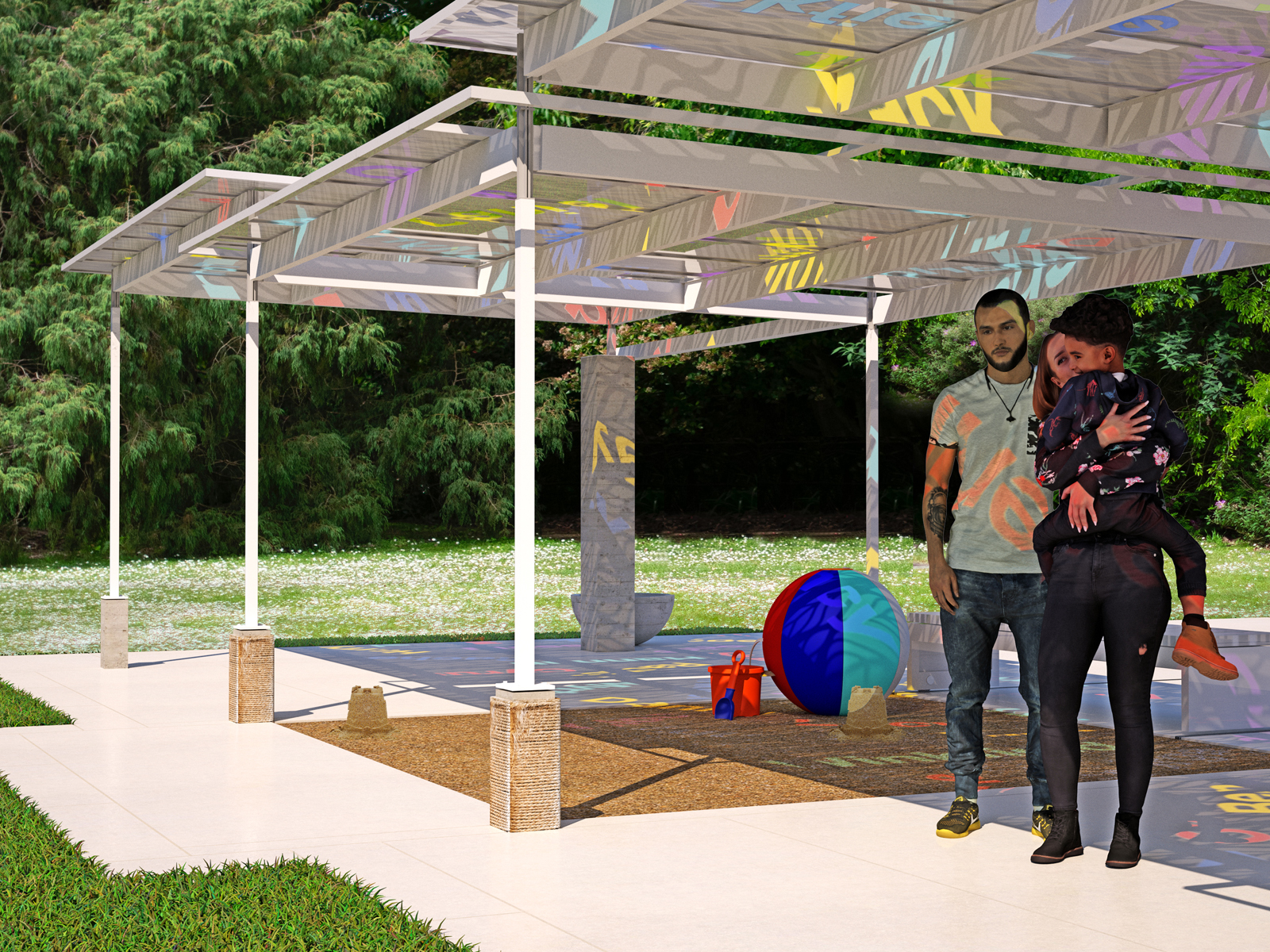This was a Pecha Kucha talk I gave with Harvard educated landscape architect, Jiayu Qin, the evening of September 17, 2019 at Alloy 26. Jiayu is a PA registered landscape architect working on parks and open spaces who is the Mom of an energetic 4 years old. We met and became friends while designing the Aspinwall Marina and Riverfront Park at Fisher ARCHitecture. Although I grew up in Pittsburgh and Jiayu in China, we both currently reside in Pittsburgh and are committed to improving the experience of our remarkable city.
Eric: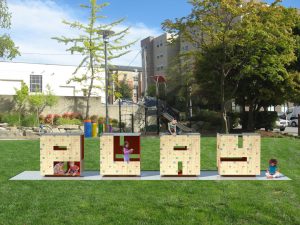
One thing about children: They are great at figuring out how to have fun! Do you remember back in design school when your teachers tried to teach you to be creative? You don’t have to teach that to little kids. In fact many parents would suggest there children are a little too creative for their own good!
Jiayu: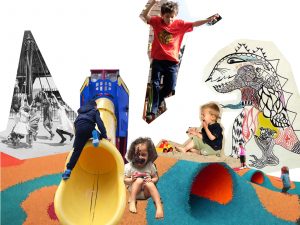
As a mom of an energetic 4-year-old, I spend about an hour every day in the playground. I am deeply entertained by watching kids, since they mess up so creatively. I often see young men and women who think they can fly, or explore the world with all their senses, especially taste.
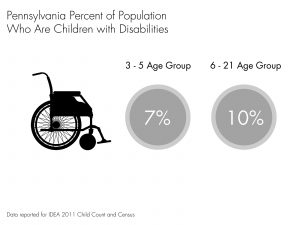 Beyond this regular craziness, there is also a significant number of kids with more special needs. In PA, 7% of kids in the 3-5 age group and 10% in the 6-21 age group are children with disabilities, who suffer from various levels of physical and mental impairment. Helping them to develop with other normal kids is important.
Beyond this regular craziness, there is also a significant number of kids with more special needs. In PA, 7% of kids in the 3-5 age group and 10% in the 6-21 age group are children with disabilities, who suffer from various levels of physical and mental impairment. Helping them to develop with other normal kids is important.
Note: Child with a disability means a child evaluated in accordance with §§300.304 through 300.311 as having mental retardation, a hearing impairment (including deafness), a speech or language impairment, a visual impairment (including blindness), a serious emotional disturbance (referred to in this part as ‘‘emotional disturbance’’), an orthopedic impairment, autism, traumatic brain injury, another health impairment, a specific learning disability, deaf-blindness, or multiple disabilities, and who, by reason thereof, needs special education and related services. (IDEA)
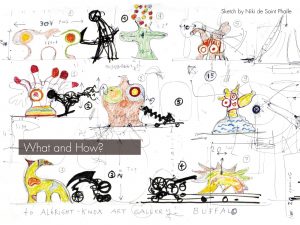 As a person who works in the design field, I am so bored by the cookie-cutter metal and plastic structures. I am often curious what could we do to keep up with these free young minds? And how can we imagine and experience the environment like kids? With some research and project experience, I see some interesting trends:
As a person who works in the design field, I am so bored by the cookie-cutter metal and plastic structures. I am often curious what could we do to keep up with these free young minds? And how can we imagine and experience the environment like kids? With some research and project experience, I see some interesting trends:
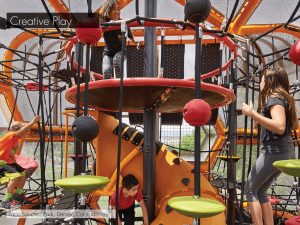 Creative Play
Creative Play
Rather than provide kids with a structure with defined uses, like a slide or a swing, designers now provide equipment and toys with more open definitions. Sometimes this equipment can even look like an enlarged pile of spaghetti! So kids play the way they like: They can climb, crawl, slide, or even swing upside down.
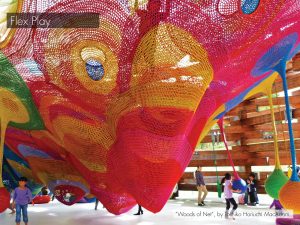 Flex Play
Flex Play
Parents want their kids to be safe. Soft netting fabric is gaining a lot of popularity with kids and adults. Moms could practice yoga and kids could pretend play they are caterpillars in cocoons, sometimes spiders or bats.
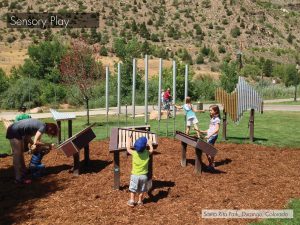 Sensory Play
Sensory Play
Kids are noisy. It is really fun for them to get loud! Research shows that when they make themselves heard, they get a sense of achievement. Since sensory play doesn’t require a high level of physical fitness, it is very inclusive for kids of all ages and abilities.
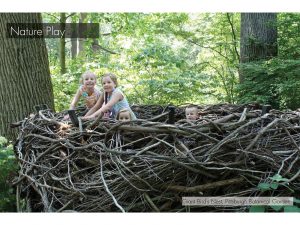 Nature Play
Nature Play
Nature has no “safety net” example, no soft rubber surfaces, and no power-coated guardrails. Nature play gets children to explore and take risks in more natural environments. Research shows that when children play in challenging environments made with less artificial materials they tend to take more risks and become more engaging and vigorous.
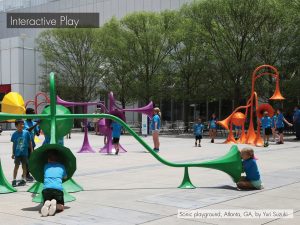 Interactive Play
Interactive Play
We’re not talking about using a PlayStation Wii in a public plaza. We’re talking about interacting with other kids! Learning to play socially is critical for developing social skills and establishing friendships. Through interactive play, children learn to share, cooperate, take turns, and express emotions. They also promote physical activity and moral reasoning.
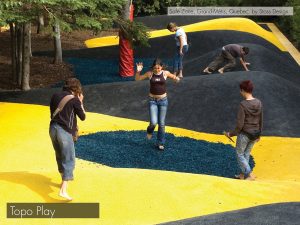 Topo play
Topo play
I love playgrounds that people of all ages can use, especially working Moms who lack exercise! Playgrounds that introduce the fun of land topography are quite inspiring. Here you do not have to sit or stand upright. You can jump, run, crawl, roll, lean, or lie down as you wish. When you redefine your pose, your head also starts to be more open.
 Unique play
Unique play
Playground time is a big deal for kids. It is good for them to have places to go that are fun, inspiring, and unique. Incorporating site features – both cultural and natural – repurposing existing structures, and collaborating with local artists, are all new design directions for creating one of a kind play spaces.
Eric:
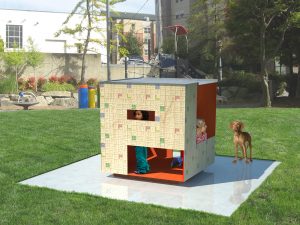 So, as Jiayu has suggested, our goal as designers is to create accessible playground environments where kids are free to play flexibly, naturally, and experientially. The walls of this Fisher Architecture designed playhouse are inscribed with letters. And the letters “P”,”L”,”A”, and “Y” are highlighted with bright colors.
So, as Jiayu has suggested, our goal as designers is to create accessible playground environments where kids are free to play flexibly, naturally, and experientially. The walls of this Fisher Architecture designed playhouse are inscribed with letters. And the letters “P”,”L”,”A”, and “Y” are highlighted with bright colors.
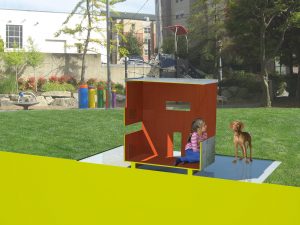 Each side of the playhouse features a different letter, so if you walk around the structure you will spell out the word, “PLAY”. Kids literally enter the house through the alphabet. And they experience this alphabet universe both from the outside and from within.
Each side of the playhouse features a different letter, so if you walk around the structure you will spell out the word, “PLAY”. Kids literally enter the house through the alphabet. And they experience this alphabet universe both from the outside and from within.
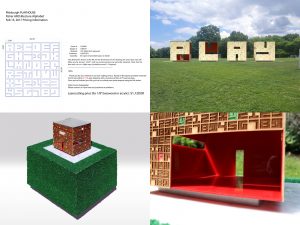 Playgrounds these days look the same wherever you go, filled with generic plastic equipment that you can only use in one way. Up the slide. Down the slide. Over and over. Jiayu and I share the goal of providing the same thought to the design of playground equipment that we give to our homes and public buildings.
Playgrounds these days look the same wherever you go, filled with generic plastic equipment that you can only use in one way. Up the slide. Down the slide. Over and over. Jiayu and I share the goal of providing the same thought to the design of playground equipment that we give to our homes and public buildings.
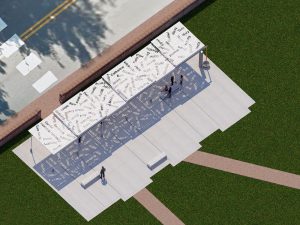 I’m a writer as well as an architect so I guess I’m kind of obsessed with words: This was a competition we did at Fisher Architecture earlier this year: The names of former slaves at William and Mary College were inscribed in glass. The sun’s light shines through the panels and tattoos the bodies of passersby.
I’m a writer as well as an architect so I guess I’m kind of obsessed with words: This was a competition we did at Fisher Architecture earlier this year: The names of former slaves at William and Mary College were inscribed in glass. The sun’s light shines through the panels and tattoos the bodies of passersby.
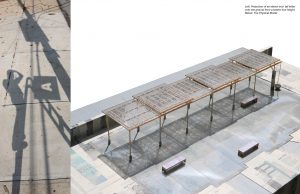 The intent was to allow visitors to experience history anew directly on their bodies. That’s me to the left on a ladder with a cutout letter “A” making sure the concept works. And that’s the physical model on the right.
The intent was to allow visitors to experience history anew directly on their bodies. That’s me to the left on a ladder with a cutout letter “A” making sure the concept works. And that’s the physical model on the right.
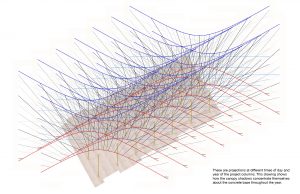 I downloaded an amazing French sundial shadow calculator app to determine precisely where the shadows would fall in in summer and winter. How cool would it be, I thought at the time, to reinvent this idea as a piece of playground equipment!
I downloaded an amazing French sundial shadow calculator app to determine precisely where the shadows would fall in in summer and winter. How cool would it be, I thought at the time, to reinvent this idea as a piece of playground equipment!
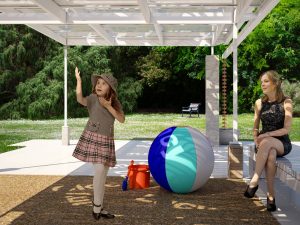 So using my software I carefully wrapped the rough parts with rope, lowered the roof way down, went from six panels to just four, and installed a sand box. Now kids can stand under their own names and experience the alphabet anew.
So using my software I carefully wrapped the rough parts with rope, lowered the roof way down, went from six panels to just four, and installed a sand box. Now kids can stand under their own names and experience the alphabet anew.
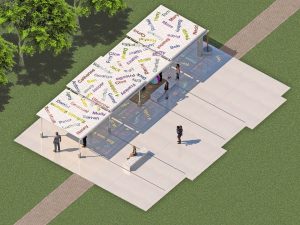 After our first meeting, Jiayu suggested that kids would really appreciate if the shadows of the children’s names were in color. Children find it easier to differentiate bright colors and are drawn to them as result. This makes them feel more comfortable and makes them happy!
After our first meeting, Jiayu suggested that kids would really appreciate if the shadows of the children’s names were in color. Children find it easier to differentiate bright colors and are drawn to them as result. This makes them feel more comfortable and makes them happy!
Because there is no single right way to play, Jiayu and I feel that that there are as many potential playground designs as there are children.
Architects who design for adults have lots to learn from kids. Adults also love challenging, experientially powerful environments. We say “no” to boring, generic architecture and “yes” to play and adventure!!!
